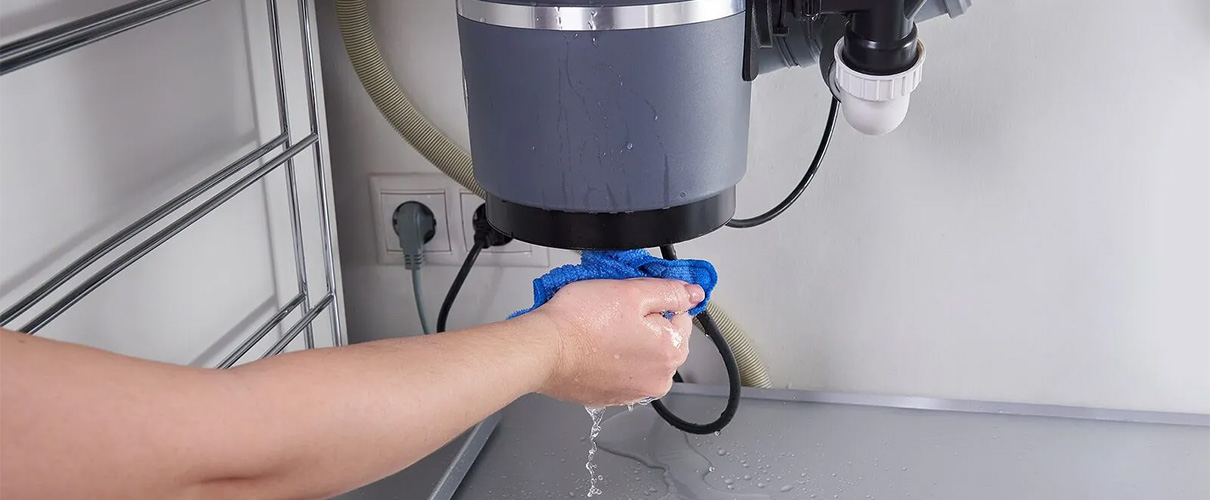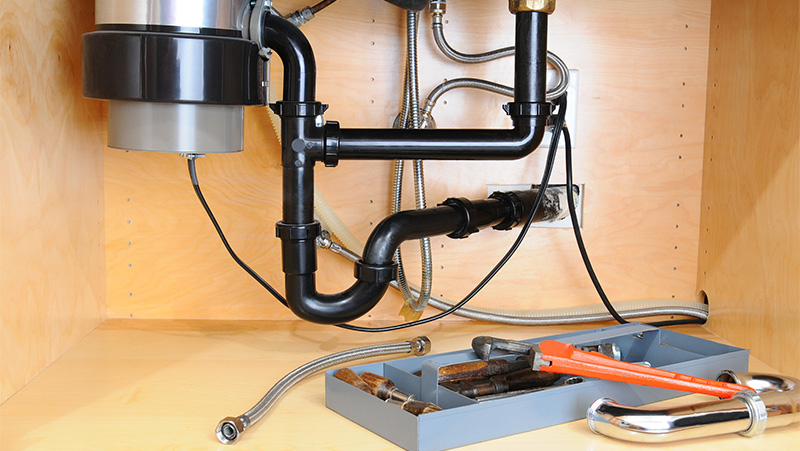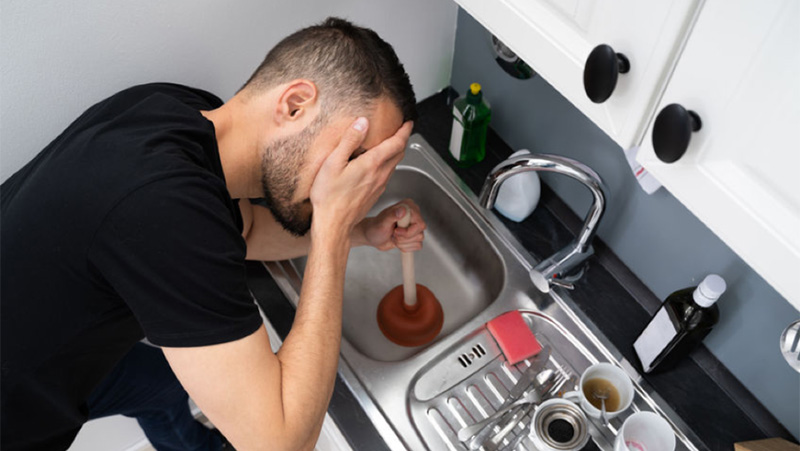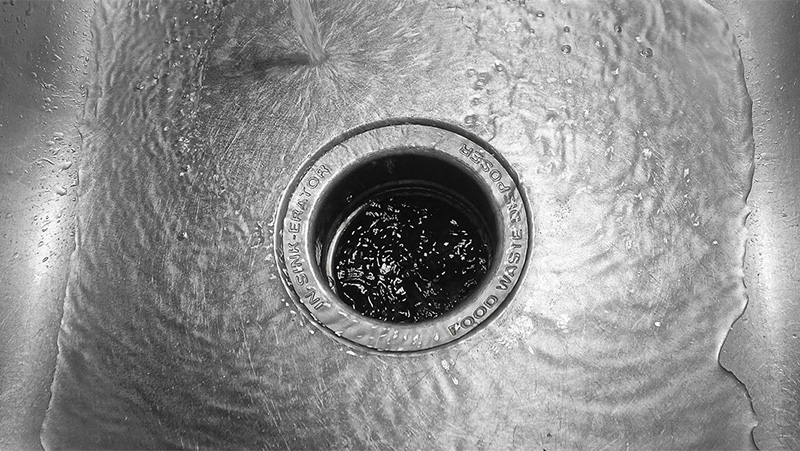What to Do When Your Garbage Disposal Stops Working?

The garbage disposal is an essential part of your kitchen appliances. Problems with disposal can be costly and messy in addition to being annoying. You may have several reasons why your garbage disposal stopped operating. A faulty trash disposal can give off various telltale signals, such as garbage disposal humming but not working, water spilling under the unit or filling the sink, delayed draining, or not turning on when you flip the switch.
What action can you take?
Resetting your garbage disposal can be the one to start with. Simply pushing the button located at its base will reset your disposal. The most frequent causes of the reset button not working include malfunctioning seals in the mounting, hoses, or pipe connections, electrical system problems, disposal blockages, and clogged drain pipes. Learn tips on how to fix your garbage disposal by Appliance Medic.
1. Garbage Disposal Not Turning On
If not, check that the power cord is in place when you turn on the switch. Items under the sink at times will have shifted and unplugged the disposal in doing so unintentionally, so attempt repositioning first. If not, there’s a chance the integrated circuit breaker tripped.

Reset the Garbage Disposal
In general, one may reset the garbage disposal by a button located at the unit’s bottom or on the side. The button is supposed to trip the garbage disposal when it becomes too laden or has heated up, turning off power to the motor.
A tripping of the internal circuit breaker can be solved by a simple pressing of the reset button that is found at the bottom of the disposer, and then the disposal should be powered back on.
- Locate the reset button at the bottom
- To reset the disposal press the button firmly for few seconds
This should restore power to the unit and allow it to function. Should the disposal not come on after the reset is complete, then move to the next step.
Check the Power Supply
When an appliance, such as a garbage disposal, stops operating, the first thing to do is to make sure it is still connected. Even though this step could seem really straightforward, consider the space beneath your sink in your house for a moment: The garbage disposal plug is easily pushed out of the outlet or knocked loose if you store cleaning products or a wastebasket underneath your sink. You can resume your work after plugging it in!
Check the Power Supply
Whenever any appliance, for instance a garbage disposal, stops working, the first thing to check is whether it is still connected. Most garbage disposals have a reset button on the bottom or side of the unit.
This button is designed to trip when the disposal becomes overloaded or overheated, cutting off power to the motor. If it still does not make the disposal turn on, find the reset button on the unit and press it in firmly to reset the unit. The unit should have its power back and be working. If the disposal doesn’t turn on after being reset, continue to the next step.
Check for Power
If the garbage disposal is plugged in, a tripped circuit breaker can be the cause of the problem. Every now and then, a short within the disposal could trip the circuit breaker. If that happens on a regular basis, then it might be a sign of a more serious problem that needs to be looked at by an electrician.
Check the plug
- Ensure the garbage disposal is securely plugged into a functioning power outlet.
- Check for any signs of damage or wear on the power cord.
- If the disposal is hardwired, skip this step and proceed to the next.
Circuit Breaker Inspection
- Locate the circuit breaker or fuse box that controls the power to the garbage disposal.
- Check if the breaker has tripped or if the fuse has blown. If so, reset or replace accordingly.
- It’s not uncommon for the disposal’s circuit to trip due to overload or electrical issues.
Outlet Test
- Plug in another small appliance or use a voltage tester to check if the power outlet is functioning.
- If the outlet is dead or malfunctioning, it may be the reason why your garbage disposal isn’t turning on.
- Ensure there’s no visible damage to the outlet and that it’s properly grounded.
GFCI Reset
- If the power outlet is equipped with a Ground Fault Circuit Interrupter (GFCI), check if it has tripped.
- Reset the GFCI by pressing the reset button. If it will not reset, there may be a fault in the electrical circuit.
Check Wiring
- If the disposal is hardwired, inspect the wiring connections inside the electrical junction box. Make sure all connections are secure and free from damage or corrosion.
- If any wires appear loose or damaged, turn off the power and repair or replace them as needed.
Voltage Testing
- If you have a voltage tester, use it to check for power at the disposal’s electrical junction box.
- Be cautious and follow proper safety procedures when working with electricity.
- If power is not found, that indicates a wiring or internal problem with the disposal that needs further examination.
2. Garbage Disposal Clogged
Blockage is a common problem that may occur in the chambers of garbage disposals, especially if it will be filled by either large food particles or fibrous materials. This might lead to the sink flowing slowly or being blocked completely due to blockage from the disposal. Repair might include detaching the discharge pipe and drain trap.
How to Clear the Drain
- Start clearing the blocked garbage disposal drain, switching off power to the disposal in order to avoid the same being accidentally switched on.
- Next, you should carefully inspect the drain with a flashlight, looking for visible debris such as food scraps or cutlery or other material.
- If you can see and reach the clog, use tongs or pliers to carefully remove it from the disposal.
- Alternatively, you can try using a plunger or a plumbing snake to dislodge the clog from the drain pipes.
- Once the blockage is cleared, run a decent amount of cold water to actually eliminate the remnants and test the disposal again, so it is operative as it should be.

3. Garbage Disposal Leaking
There are various points from where it can develop a leak: from the sink flange, the discharge drainpipe, and the dishwasher connection. These leaks can lead to water damage and mold growth if not addressed promptly.
If you see it from the garbage disposal, look for the cause of the leak as soon as possible so that it doesn’t worsen. Leak at the bottom of the disposer, reset button point, could show that there are either internal cracks or maybe the seal has broken. Common failures if they occur after long use.
In such instances, consider highly changing the entire garbage disposal unit instead of trying to fix it. Call us for any other problem and let us be at your place with an easier and faster repair in your area.
How to Fix Leaking Sink Flange
The sink flange is the downside of the garbage disposal unit, through which the garbage disposal is mounted via the sink. If a leak is coming from the sink flange, then the flange gasket could be damaged, or the mounting bolts are loose.
- To fix a leaking sink flange, start by turning off the disposal power supply
- Release the disposal from the mounting flange by turning it towards the mounting ring under the sink
- Tighten the mounting bolts located underneath the sink.
- Reinstall and Restart.
- If the leak persists, this is when you can replace the flange gasket by first removing the disposal unit from the sink and then installing a new gasket.
Leaking Discharge Drainpipe
It’s a pipe in which the waste water coming from the garbage disposal discharges into the main drain line. Leakage might arise due to loose fittings or even cracks along the pipe.
- To fix a leaking discharge drainpipe, start by tightening any loose connections using a pipe wrench.
- If the pipe is cracked or damaged, you may need to replace the affected section of pipe or install a new pipe entirely.
Leaking Dishwasher Connection
The connection from the dishwasher allows a garbage disposal to empty the water directly into the disposal unit. This hose clamp here could be loose if you were getting a leak at this connection, or the hose could be damaged.
- To fix a leaking dishwasher connection, start by tightening the hose clamp using a screwdriver or pliers.
- If the hose is damaged, you may need to replace it with a new hose of the same size and length.
4. Garbage Disposal Humming
Suppose that when you flick the switch on your garbage disposal, it makes a buzzing sound but won’t turn on. This indicates that there’s probably something stuck between the impellers and the shredder ring, or between the flywheel and the flywheel itself. Remember it is never safe to reach down into the garbage disposal with your hands. Here is what can be done to fix up a garbage disposal that is humming but not working:
- Fixing a humming garbage disposal starts with turning off the power to the unit in order to prevent any accidents.
- Thereafter, the grinding parts should be turned by rotating them manually using a hex wrench or mechanically turning using the manual rotation feature that comes in some models to free them from obstructions.
- No hands or metallic objects are to be put in the disposal because it may cause injury or damage.
- Once the obstruction is cleared, press the reset button on the disposal unit to reset the motor.
- If it still hums, not grinding could cause even more serious problems with the motor or internal parts which would require professional repair or replacement.
5. Garbage Disposal Jammed
If the garbage disposal is humming when you turn it on, there may be food particles or other material stuck between the impeller and the drain hole, creating a blockage. To prevent the disposal from overheating and causing irreversible damage to the motor, turn it off immediately.

How to Fix a Jammed Garbage Disposal
- Under the sink, unplug the garbage disposal. Switch off the electricity at the circuit breaker that supplies the hardwired disposal.
- Place the garbage disposal wrench that was included in the package into the flywheel rotating hole located at the disposal’s bottom.
- Use a hex wrench if you don’t have the garbage disposal wrench.
- Move the objects obstructing the impeller or flywheel by rotating the wrench in a clockwise motion. After you’ve released the jam, the wrench ought to spin freely.
- In the event that a wrench is not available, you can forcefully twist an impeller blade by inserting the handle of a wooden spoon, brush, or plunger down the drain and pressing against it.
- After clearing the obstruction, insert the waste disposal’s plug, run some cold water, and activate the disposal. It might be necessary to hit the reset button.
How to Keep Your Garbage Disposal Maintained
To avoid fixing a garbage disposal in the future, first you need to identify the type of garbage compactor you’re dealing with. Garbage disposals come in various varieties, such as continuous and batch feed models. To turn on the disposal, batch feed must have the lid over the drain opening. Continuous turns the device on and off using a switch.
Air is also used in an air switch device to trigger the disposal. The power source for the disposal on all of these models should come from an outlet beneath the sink. Learning more about the many components or anatomy of a garbage disposal is also beneficial. Moving forward you can try these ways to maintain your garbage disposal:
- Don’t run potato peels, nuts, animal bones, and some types of shells down the garbage disposal.
- Even little pieces of fibrous food leftovers, such as raw cabbage, carrots, or celery, might strain the garbage disposal’s motor or wear out its impellers.
- Certain foods may also cause blockages. Coffee grinds can accumulate in the drain pipe, so avoid sending them down the grain.
- This also holds true for fat, grease, or oil, which can adhere to the interior of pipes.
- The majority of these scraps should go in the trash can or, if they don’t include meat, the compost pile rather than the garbage disposal.

Garbage Compactor Repair Services Near Me
Problems with compactor machines for garbage may arise from normal wear and tear, misuse, or even an issue with the electrical connection. By understanding what not to put in garbage disposals and how to clean them, you may prevent a lot of these issues.
But not every problem is best left to be handled by a do-it-yourself project. If the disposal’s wiring is loose, broken, or malfunctioning, it might be best to contact an expert. Furthermore, certain problems can be signs of a more serious issue.
If the damaged garbage disposal is still relatively new, you can also get in touch with the manufacturer; your replacement may be covered by warranty. You will have to replace the garbage disposal if it is not covered by warranty.
Don’t hesitate to get in touch with our knowledgeable professionals for trustworthy garbage compactor repair services if you encounter any of these problems or need professional assistance.
Our goal at Appliance Medic is to make sure your appliances are operating correctly. A one-year guarantee is also included with our dedication to excellence for both labor and installed repair components.
FAQs
Garbage disposal malfunctions can be caused by abuse, regular wear and tear, or even an electrical connection problem. Many of these problems can be avoided if you know what not to put in garbage disposals and how to clean them.
However, not all issues are best suited for a do-it-yourself job. It could be preferable to get in touch with an expert if the wiring for the disposal is loose, damaged, or not working properly.

